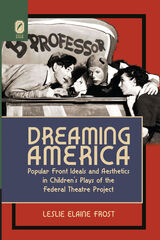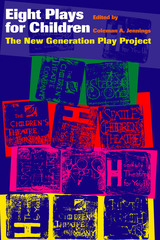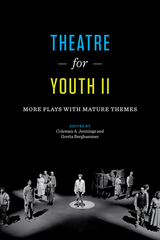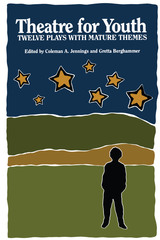

The New Generation Play Project was a daring experiment in American children's theatre. Begun in 1989 by a consortium that included the Seattle Children's Theatre, The Children's Theatre Company of Minneapolis, Stage One: The Louisville Children's Theatre, and the Honolulu Theatre for Youth, the NGPP raised half a million dollars to commission major American dramatists to create new works for young people and to produce these plays over a several-year period.
This book provides the full text of the plays produced through the NGPP:
- Constance Congdon, Beauty and the Beast
- Velina Hasu Houston, Hula Heart
- Tina Howe, East of the Sun and West of the Moon
- Len Jenkin, The Invisible Man
- Mark Medoff, Kringle's Window
- Eric Overmyer, Duke Kahanamoku vs. The Surfnappers
- Michael Weller, Dogbrain
- Y York, The Witch of Blackbird Pond
In his introduction, Coleman Jennings describes the work of the NGPP, some of the controversies surrounding its selection of playwrights who do not ordinarily write for young audiences, as well as the playwrights' reactions to the project, and the critical reception of the plays. Suzan Zeder, one of the nation's leading playwrights for family audiences, supplies the foreword.

When Theatre for Youth: Twelve Plays with Mature Themes was published in 1986, it met a need for plays that could help young people deal with some of the more difficult realities of life. Responding to the sweeping changes in society over the succeeding thirty years, Coleman A. Jennings and Gretta Berghammer have assembled a new collection of plays that reflects not only on themes such as aging, death and dying, friendship, courage, conformity, maturation, sexuality, and struggles with moral judgment but also on gender identity, poverty, diversity, and discrimination.
Theatre for Youth II: More Plays with Mature Themes presents twelve plays, nine of them new to this anthology, that offer a rich variety of original stories (The Tomato Plant Girl, The Arkansaw Bear, Super Cowgirl and Mighty Miracle), compelling adaptations (The Afternoon of the Elves, Broken Hearts, Courage!), historical drama (Mother Hicks, Johnny Tremain), diverse themes (La Ofrenda, The Transition of Doodle Pequeño), friendship (The Selfish Giant), and future societies (With Two Wings). As these plays explore some of the most challenging themes for today’s youth, including the difficulties of single parenthood, divorce, race relations, sexuality, and gender discrimination, they share messages fundamental to us all: open your imagination and dare to dream; embrace life; honor your personal passion, beliefs, and creativity; take a risk; and love with all your heart.

Since the beginning of the theatre-for-youth movement in the United States, the majority of plays written for children have been fairy tales. By the 1960s, however, encouraged by changes in social attitudes toward children, playwrights began to respond to a growing tendency on the parts of both parents and teachers to have children face, rather than avoid, the more difficult truths of existence. Thus children's dramatic literature was opened to new subjects, themes and characters previously considered unsuitable for the young audience.
Theatre for Youth seeks to identify and illustrate this trend by examining twelve plays that deal with mature themes: aging, death and dying, conformity, sexuality, divorce, moral culpability. The plays have been chosen not only for their mature content, but also for their professional integrity, the delicacy with which they handle their subject matter, and their respect for their intended audience.
A foreword by Jed H. Davis, an introduction and summary paragraphs for each play by Jennings and Berghammer, and a lengthy annotated list of suggested plays for further reading or viewing make this volume extremely useful both for directors of children's theatre and for teachers.
READERS
Browse our collection.
PUBLISHERS
See BiblioVault's publisher services.
STUDENT SERVICES
Files for college accessibility offices.
UChicago Accessibility Resources
home | accessibility | search | about | contact us
BiblioVault ® 2001 - 2024
The University of Chicago Press









